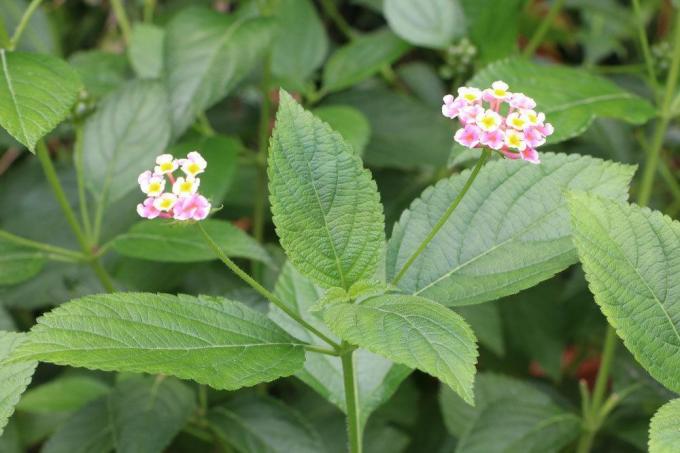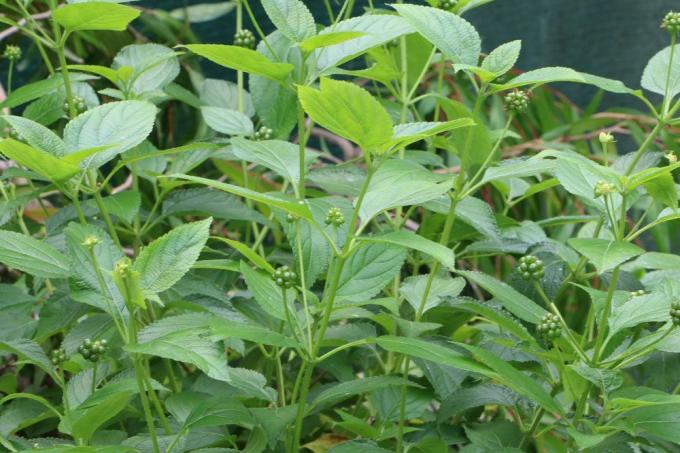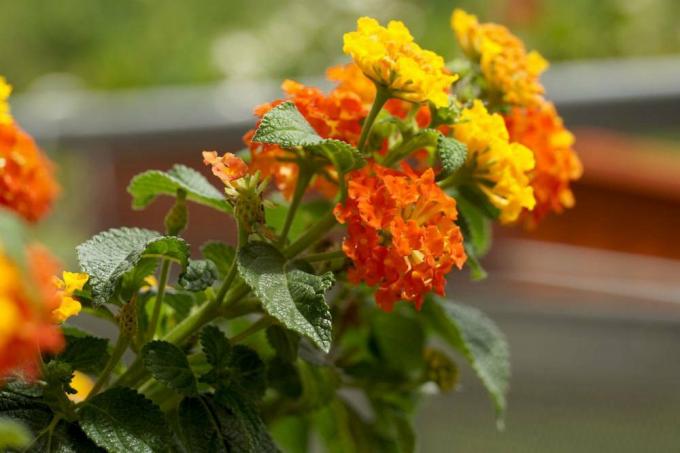
table of contents
- Propagation of cuttings
- time
- Select a suitable shoot
- Prepare the cutting
- Cultivation in soil
- Rooting in water
- Propagation by seeds
- frequently asked Questions
This is one of the most beautiful potted plants with magnificent flowers from the tropical regions Convertible rose. Propagating the verbena plant is not difficult, even for beginners. There are various options to choose from.
In a nutshell
- The easiest way to multiply convertible florets is by cuttings
- The cultivation is possible in soil as well as in water
- Alternatively, the ornamental plants can also be grown from seeds
Propagation of cuttings
The best way to multiply convertible florets is through cuttings.
time
Spring is the ideal time to multiply convertible florets. At this point there is a good chance that the cut off shoot will actually take root. If a pruning is due in the spring, the resulting "waste" can be used Propagation of cuttings be used.
- general: May to August
- when pruning the plant: late March to April
- best time: April to May

If you don't overwinter your convertible florets, you can cut the cuttings in autumn before the first frosts let the plant die. Over the winter, the cutting then matures to such an extent that it can be released back into the field in spring.
Select a suitable shoot
So that the cutting can grow well, choose a healthy, strong shoot from the previous year. It should already be slightly lignified and, if possible, not be in bloom. Cut the end of the shoot from the mother plant with a smooth cut. Since not all of the shoots actually take root, it is advisable to always cut several at the same time.
- Length: 10 cm
- about 6 to 8 pairs of leaves
- Tool: sharp secateurs
- Interface: 1 to 2 cm below a pair of leaves
Prepare the cutting
Before the shoot comes into the ground, remove all flowers and flower bases. The flowers would only cost the cutting unnecessary strength so that it would not be able to invest its energy in the formation of the roots. So that it does not evaporate too much moisture in the first time, cut off all the lower leaves. A maximum of two to three pairs of leaves are retained at the tip. These are completely sufficient for photosynthesis. If the shoot is to branch extensively, it is also necessary to cut off the tip of the shoot so that it sprouts again from the leaf axils.

Cultivation in soil
Depending on the space available, it is possible to place one cuttings in a small pot with substrate or several in a slightly larger bowl. With the latter variant, make sure that the leaves of the individual plants are not that Make light controversial or touch each other, because that promotes the spread of Diseases. If the stem is still very soft, pierce a hole with your finger or a wooden stick so that it does not kink when you insert it.
- Substrate: potting soil, mixture of potting soil and sand
- Depth of use: approx. 2 to 3 cm
- at least one leaf node in the ground
- Distance: at least 5 cm to the neighboring plant
Lightly press the soil around the Lantana cutting. It is important that the substrate always remains slightly moist for the next few weeks. It would be ideal to put the convertible florets in a greenhouse. If you don't have one, you can of course put a transparent plastic bag over the pot and fix it with a rubber or band at the bottom of the pot. To avoid mold formation, the earth should never be wet and the bag should be removed once a day for at least half an hour to air. In a warm and bright location without direct sunlight, it will take a few weeks for roots to form.
Rooting in water
If cultivation in soil is too expensive for you, you can root the shoots in a glass of water. This method is usually also very successful with convertible roses. Although the roots are easier to see in a transparent glass, opaque vessels give better results. When inserting the bottom pair of leaves should be above the water level so that they do not start to rot. In a bright, warm place on the windowsill without direct sunlight, it takes around six to eight weeks for roots to form. Remember to refill the water occasionally and to replace it completely every two weeks so that no bacteria and germs can spread in it. If the roots are at least three centimeters long, you can plant the small plant in soil.
Note: Convertible roses don't like hard water. It is therefore essential to use rainwater or boiled drinking water with a low lime content for cultivation.

Propagation by seeds
Another way to propagate the convertible rose is by sowing seeds. The seeds usually germinate well, but the plant usually needs a few years to flower for the first time. The properties of the Lantana camara obtained in this way can, however, differ greatly from those of the mother plant. Sowing in a warm environment is generally possible all year round.
- best time: spring (late March to April)
- Pre-soak seeds: 48 hours in lukewarm water
- Substrate: sowing soil, cactus soil, coconut spring soil
- Planting depth: approx. 1 cm
- Temperature: 22 to 28 degrees
- Germination time: 6 to 10 weeks
It is best to moisten the substrate regularly with a spray bottle. You should preferably use rainwater, boiled or distilled drinking water for this, because the changing rose is sensitive to lime. A mini greenhouse or plastic film protects against excessive evaporation. As soon as the cotyledons appear, you should continue to cultivate the plants a little cooler, but still bright. If you have sown several seeds in a bowl, you can carefully prick them out after another four to six weeks.
Note: If you only let the seed dry out once, it can be completely destroyed.
frequently asked Questions
The cut shoots do not tolerate high amounts of nutrients. In addition, the new roots grow and branch better when they have to “search” for the nutrients. They are only fertilized the first time when new shoots or leaves have formed on the plant. Convertible florets are best fertilized with flowering plant fertilizer (balanced NPK content).
Special substrates for propagating cuttings are available from specialist retailers. In general, you can also make a soil yourself. It is important that it is very permeable to water and not prone to waterlogging. In addition, there should be no additional fertilizer in it, as nutrient-poor substrates have a positive effect on root formation. Therefore, cactus soil and sowing soil are well suited for this.
Cuttings need water to live, but don't yet have roots to take in. Therefore it is necessary to lower the evaporation through the leaves. You can do this by reducing leaf mass and increasing the humidity. A mini greenhouse or a plastic bag is ideal for this.


